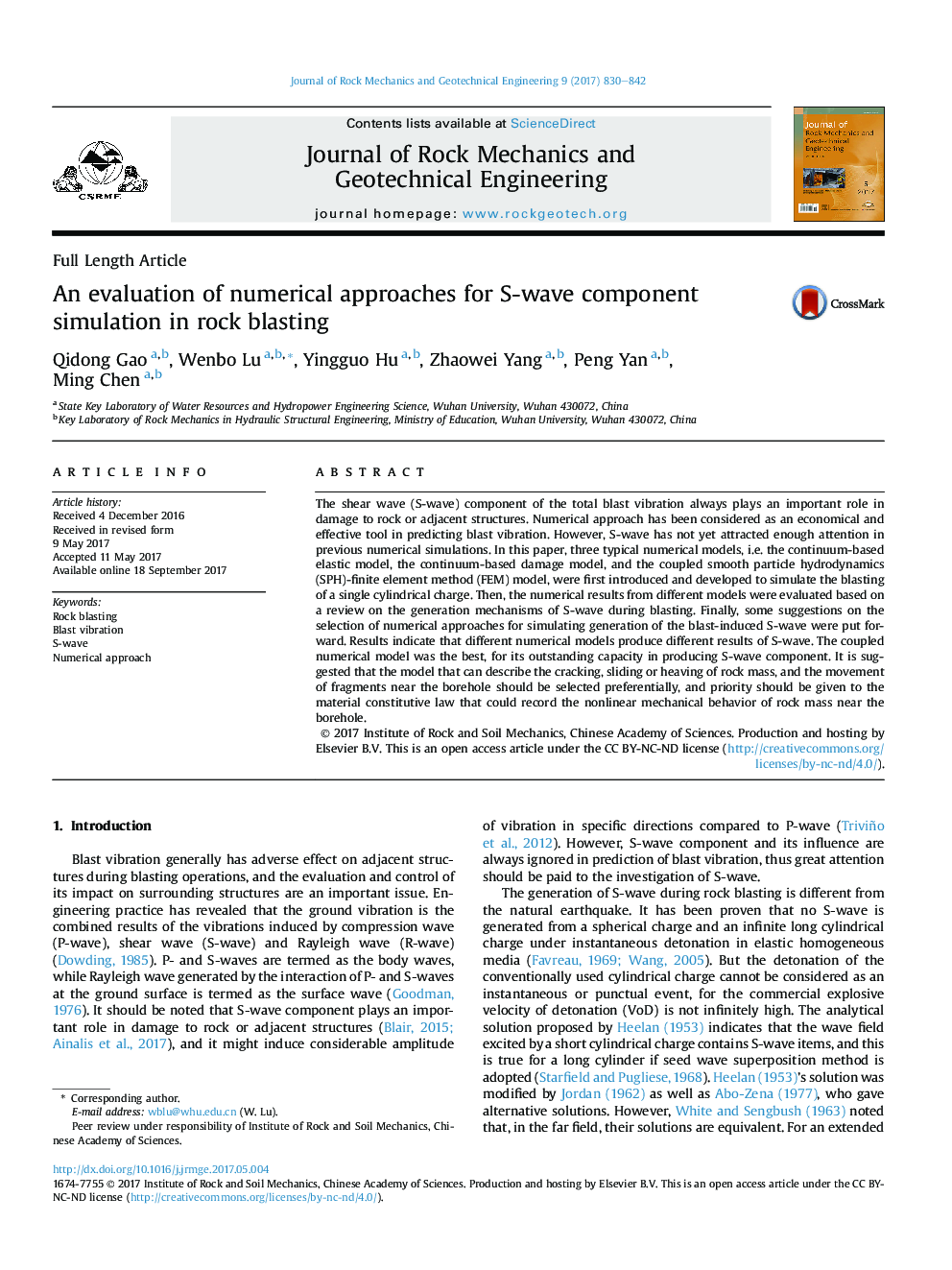| Article ID | Journal | Published Year | Pages | File Type |
|---|---|---|---|---|
| 4923685 | Journal of Rock Mechanics and Geotechnical Engineering | 2017 | 13 Pages |
The shear wave (S-wave) component of the total blast vibration always plays an important role in damage to rock or adjacent structures. Numerical approach has been considered as an economical and effective tool in predicting blast vibration. However, S-wave has not yet attracted enough attention in previous numerical simulations. In this paper, three typical numerical models, i.e. the continuum-based elastic model, the continuum-based damage model, and the coupled smooth particle hydrodynamics (SPH)-finite element method (FEM) model, were first introduced and developed to simulate the blasting of a single cylindrical charge. Then, the numerical results from different models were evaluated based on a review on the generation mechanisms of S-wave during blasting. Finally, some suggestions on the selection of numerical approaches for simulating generation of the blast-induced S-wave were put forward. Results indicate that different numerical models produce different results of S-wave. The coupled numerical model was the best, for its outstanding capacity in producing S-wave component. It is suggested that the model that can describe the cracking, sliding or heaving of rock mass, and the movement of fragments near the borehole should be selected preferentially, and priority should be given to the material constitutive law that could record the nonlinear mechanical behavior of rock mass near the borehole.
